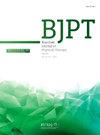Examining heterogeneity and reporting of mirror therapy intervention for phantom limb pain: A scoping review
IF 3.1
3区 医学
Q1 ORTHOPEDICS
引用次数: 0
Abstract
Background
Mirror therapy shows promise in the treatment of phantom limb pain but lacks robust evidence.
Objectives
To address this gap, we conducted a scoping review aiming to comprehensively explore the landscape of mirror therapy practice, gather details about the session content, and offer recommendations for future research.
Method
We searched seven databases for published work from 1995 to May 2023. Two independent reviewers selected, assessed, and extracted data from eligible articles. Articles, regardless of study design, were considered eligible if they investigated mirror therapy as an intervention for phantom limb pain.
Results
A total of 44 articles were included, comprising 16 randomized control trials, 14 prospective cohort studies, 15 case reports, and 3 protocols. These studies collectively involved 942 patients, with male patients representing 70 % of the participants. Lower limb amputation, primarily attributed to trauma, accounted for 88 % of the included patients. Pain intensity was predominantly assessed by a visual analog scale (61 %). However, there was a notable absence of detailed descriptions regarding mirror therapy sessions, particularly concerning the number of exercises, duration per exercise, and repetitions. Typically, sessions lasted 15 min each, conducted once daily. The exercises primarily focused on motor exercises targeting the distal part of the limb.
Conclusion
The practice of mirror therapy was characterized by poor description, showed significant heterogeneity, and a lack of standardized protocols, which contributes to an overall low level of evidence. Addressing these gaps in practice description and standardization is crucial for improving reproducibility and strengthening the evidence base for the prescription of mirror therapy.
求助全文
约1分钟内获得全文
求助全文
来源期刊
CiteScore
6.10
自引率
8.80%
发文量
53
审稿时长
74 days
期刊介绍:
The Brazilian Journal of Physical Therapy (BJPT) is the official publication of the Brazilian Society of Physical Therapy Research and Graduate Studies (ABRAPG-Ft). It publishes original research articles on topics related to the areas of physical therapy and rehabilitation sciences, including clinical, basic or applied studies on the assessment, prevention, and treatment of movement disorders.

 求助内容:
求助内容: 应助结果提醒方式:
应助结果提醒方式:


